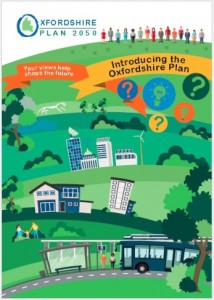Need Not Greed Oxfordshire says the Local Industrial Strategy (LIS), signed off by Government today, has been prepared by an unaccountable quango based on developers’ aspirations.
The strategy will influence the scale of growth that the Oxfordshire Plan 2050 will deliver and is likely to generate an uplift in future housing targets. It sets a target of 108,000 net new jobs in the county by 2040 which, given high existing employment levels, would mean a substantial increase in Oxfordshire’s population.
NNGO, a coalition of 41 groups from across the county, welcomes and supports the need to plan appropriately for a strong Oxfordshire economy but are concerned that the Oxfordshire LIS has not been subject to democratic process or environmental assessment.
NNGO member Peter Jay, Chairman of ROAR (Rural Oxfordshire Action Rally), says:
“Many local councillors don’t know about the LIS, or understand its implications, as it hasn’t gone through local authorities. The public certainly haven’t had a say and there’s been no thought given to the environmental impacts. The future of the county is being stitched up behind closed doors.”
The Oxfordshire Growth Board has sought to downplay the LIS’s impact, saying it is just ‘one strategy of many that will influence to some extent the emerging Oxfordshire Plan’1. However, the National Planning Policy Framework says planning policies should have regard to Local Industrial Strategies.
The Growth Board has already commissioned a company called Iceni to carry out an Assessment of Housing Need – effectively a new Oxfordshire Strategic Housing Market Assessment (SHMA).
The brief for Iceni states more than once that the LIS will influence the scale of growth that the Oxfordshire Plan will have to deliver, and that a LIS can justify an uplift to housing targets for the county (beyond Objectively Assessed Need by the standard methodology)2.
NNGO is concerned that local Councillors are unaware of the impact of the Oxfordshire LIS and would encourage them to question and challenge OxLEP’s proposals, including asking Council leaders (who sit on the OxLEP Board) why they have signed this off without authorisation from elected members.
Read the Government announcement here.
Growth Board response to NNGO question to the Oxfordshire Growth Board, June 2019
Tender brief for Oxfordshire Assessment of Housing Need
